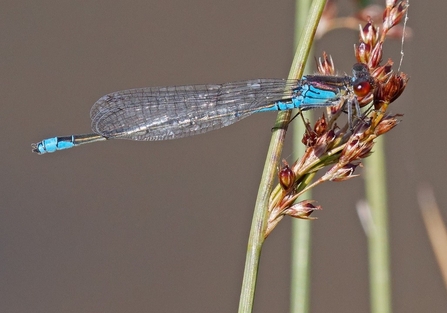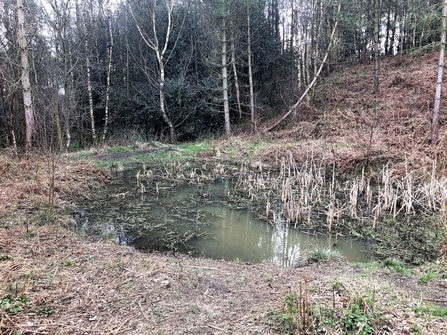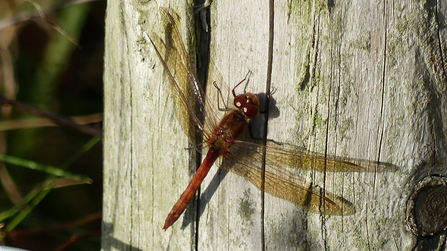The season started earlier in 2020, with the first Large Red Damselfly being spotted on April 14th just as observers were being locked down. The lockdown meant that a number of great sites, including a range of Durham Wildlife Trust reserves, went unrecorded until later in the season. Despite these restrictions, there were still well over 1000 sightings submitted and only 300 fewer than in 2019.
In total, 20 species were observed in our region, which is excellent as at most there would be 24, even under the best conditions. Once again, Rainton Meadows proved to be the best dragonfly hotspot, with 16 species recorded, including a very rare visitor to our region, the Small Red Eyed Damselfly, pictured below. To the causal observer this looks very much like one of the various blue damselflies that are commonly seen, but a closer look highlights very different markings and most of all, those vibrant red eyes.



